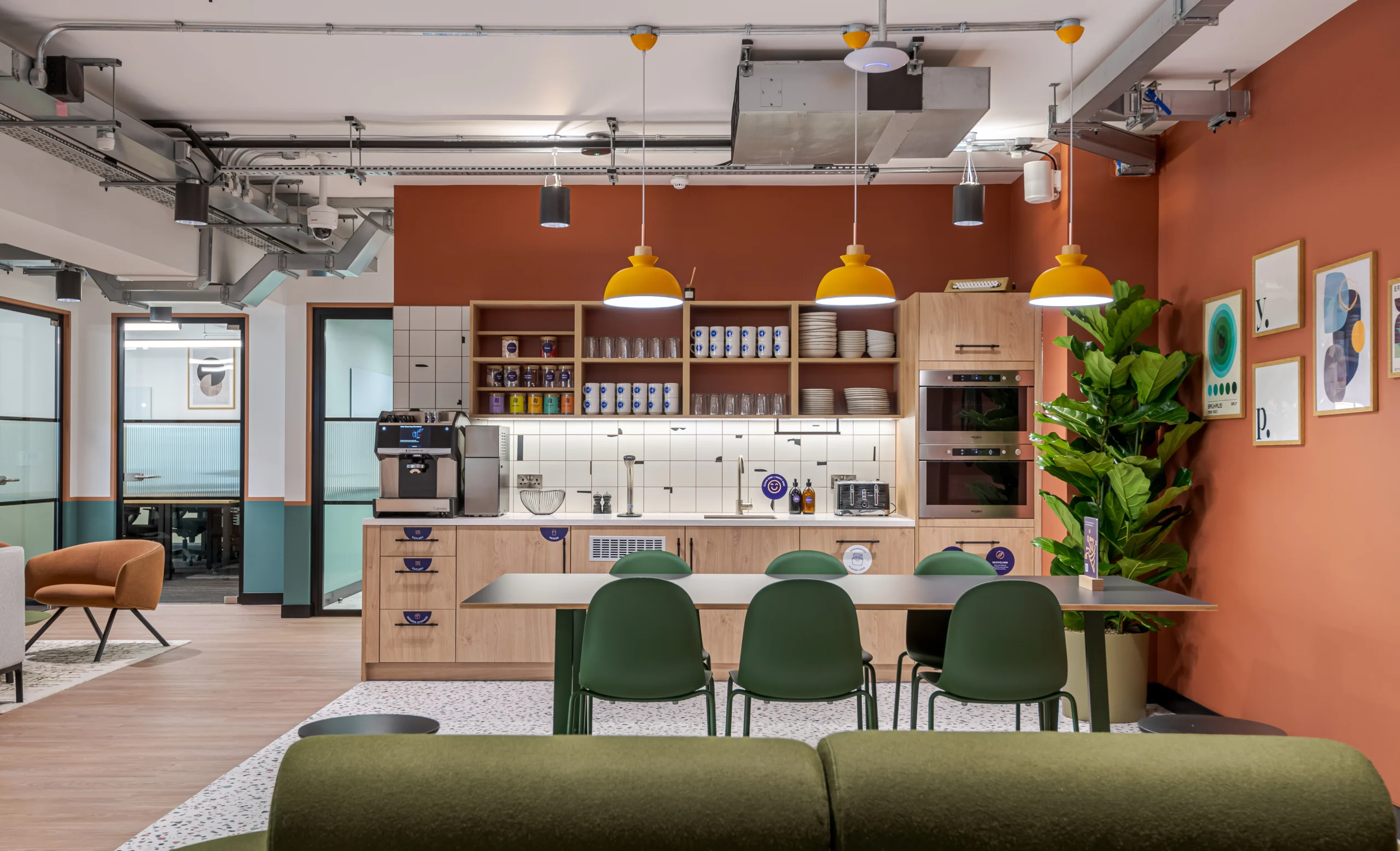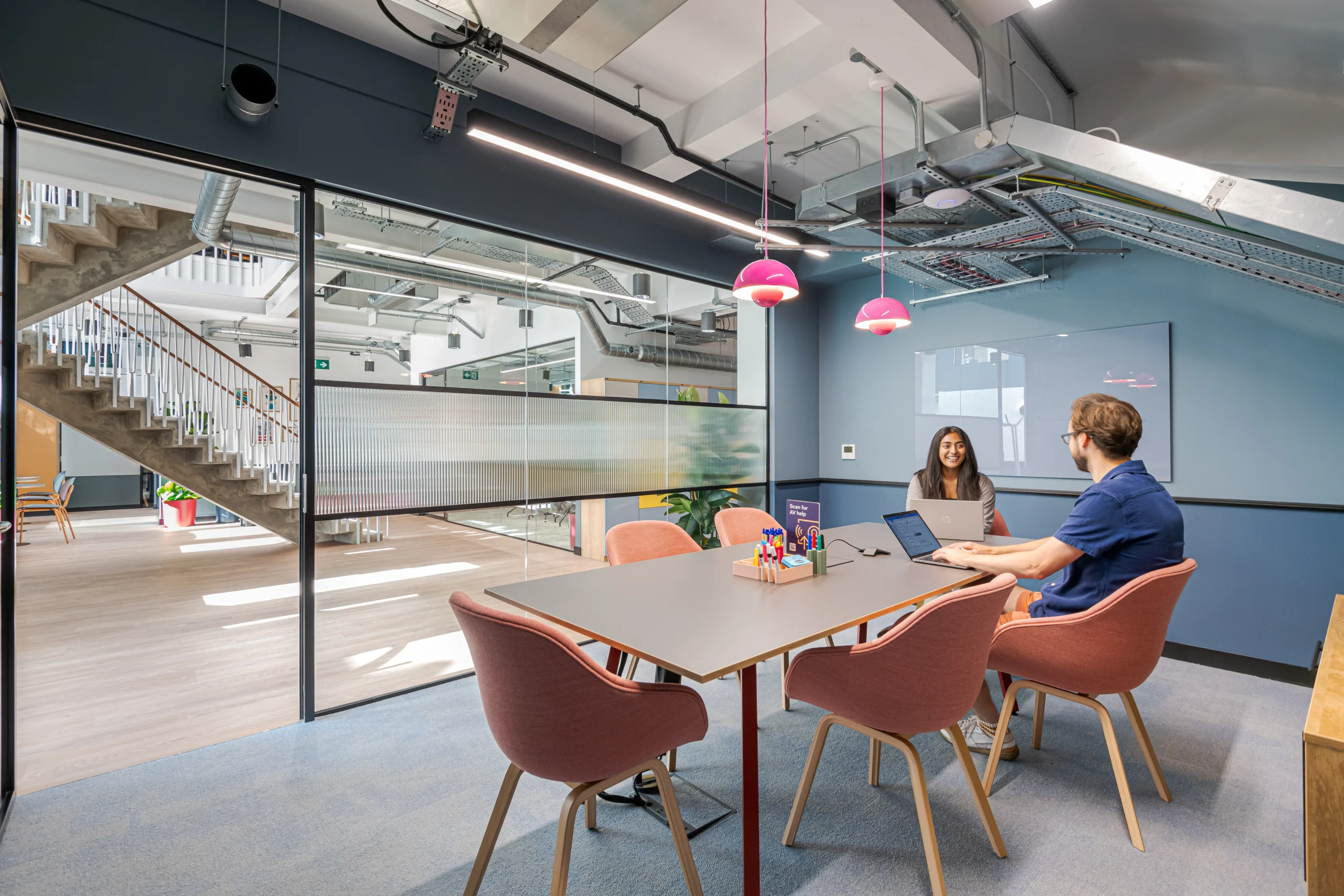Transforming the Typewriter Building
Transforming the Typewriter building into a vibrant coworking space for Work.Life was an exciting challenge for team Two. The historic seven-storey building at 140 Borough High Street spans 22,000 sq ft, making it Work.Life’s biggest space to date. Built in 1956 for a typewriter manufacturer, the building is full of character, which we aimed to preserve.
The design concept intertwines Work.Life’s brand with the building’s rich history. To maximise the functionality of the space, Two developed three working zones: social and community areas, heads-down zones for focused work, and heads-together spaces for meetings and collaboration. This approach ensures that the various needs of Work.Life members are met.

The Perfect Balance
Our approach prioritises user experience and attention to detail. You’ll find a “helping hand” coffee mug shelf above the staircase access points, where you can place your coffee while using the access control. The design includes a winter garden, an indoor oasis with a skylight that bathes the area in natural light. This area, featuring a striking tree and bespoke seating, provides an inviting agile working destination for members. The building offers a variety of spaces, including phone booths, collaborative areas with whiteboards, and meeting rooms of various sizes, further catering to the diverse needs of Work.Life’s members.

Historical Inspirations
Design elements throughout the space draw inspiration from the building’s history and the surrounding area. The floor finish found in the teapoints mirrors the original terrazzo staircases throughout the building, a feature that was further explored through the meeting room coat hooks. A 1950s-inspired colour palette provides a timeless yet contemporary feel. The Typewriter signage outside the building inspired the “Welcome to Work.Life” sign above the teapoint near the entrance, adding a nostalgic touch to the welcome experience. The ground floor serves as the heart of the space, featuring a teapoint bar with fluted timber and rattan panels that reflect the building’s original design, while the terracotta floor tiles complement the staircase details.
Space dressing focuses on the local area and history, with vintage typewriters displayed in various points, including the winter garden wall. Each floor has a unique colour scheme, providing distinct atmospheres while maintaining Work.Life’s brand identity and the overall theme of the building. Communal teapoints and breakout spaces are strategically placed near the lifts, encouraging member interaction and fostering a strong sense of community. The layout promotes collaboration, making every corner of the building inviting and functional.

The Final Flourish
Two integrated energy-efficient lighting and reused existing materials where possible. A raised access floor was installed to provide power to the lower ground and ground floors without compromising the building’s structural integrity. Real planting throughout contributes to the overall health and well-being of the workspace.
Typewriter’s lead designer, Emily Sheridan, Design Manager at Two, said: “The Typewriter building exemplifies how historical preservation can coexist with an eco-conscious environment to encourage community, creativity, and productivity, perfectly aligned with Work.Life’s ethos.”



